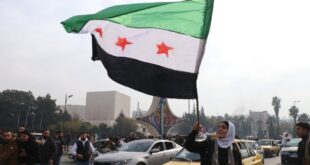Mohammad Godobe
The Islamist insurgent group Al-Shabab first rose to prominence in 2006 when US-backed Ethiopian troops invaded Somalia under the cover of American drones, ousting a coalition of Shariah courts, dubbed the Islamic Courts Union, of which Al-Shabab was the youth wing.
The armed group became the poster child for resistance. In the years that followed Al-Shabab has evolved from an armed rebel movement to a parallel government in Somalia that outpaces the Somali government in numerous fields, including security, governance, and war. Recent developments in the conflict-ridden Galgaduud region of Somalia further attest to this.
As of late August, Al-Shabab fighters had seized five separate towns in the Galgaduud region of Somalia within a 24-hour period, after government troops abandoned their posts and abruptly retreated.
These setbacks reversed a year’s worth of government advances deep into the hinterlands of Al-Shabab-controlled territory in central Somalia.
Furthermore, these latest gains made by Al-Shabab coincided with a deadly attack in the Galgaduud region just days before, that reportedly left over 100 government soldiers dead, marking the biggest battlefield loss since the fragile Western-backed government declared war one year ago.
“At the core of it, Al-Shabab have understood the importance of securing grassroots legitimacy while simultaneously navigating the often-complex clan-based society of Somalia”
Guns and governance
A key factor for Al-Shabab’s resilience and growing momentum can be attributed to the fact that the insurgents have prioritised governance and providing services to the areas they rule.
This can be witnessed with the militant group’s governing style, their financial self-sufficiency, the eradication of crime in areas they control, and the large number of civilians residing in government-controlled territory that flock to the Al-Shabab-run Shariah courts, which have gained popularity.
At the core of it, Al-Shabab have understood the importance of securing grassroots legitimacy while simultaneously navigating the often-complex clan-based society of Somalia.
In the process, the group has garnered support from local communities, hindering government attempts to bring these communities into their fold. Nowhere is this more evident than in rural communities that find themselves seeking refuge deeper into the bush with Al-Shabab as government forces advance.
According to Omar S. Mohmood, a senior East Africa analyst with the International Crisis Group, securing grassroots legitimacy is at the heart of the war.
“In the long run, the government needs to demonstrate that it’s a better bet (compared) to Al-Shabab. That’s how they’re going to win communities over and, in its core, this is a fight for community support at a local level. Both Al-Shabab and the government are vying for community support,” Mohmood told The New Arab.
While the Somali government has succeeded in pushing Al-Shabab out of many regions, government support in these communities remains low, likely because it has not provided any semblance of order and basic services – such as medical and educational services – to newly liberated constituents.
“Ensuring the delivery of immediate services, in particular humanitarian supplies and deepening governance and administrative authority, is a long-term struggle needed by the government,” explained Mohmood.
The government has outsourced security in many of the newly liberated areas totribal militias and undisciplined military units that in many cases lack oversight for their actions from the Somali government.
The Middle Shabelle region in the Hirshabelle state is a textbook example. A focal point for the government’s war campaign last fall, the region is now plagued by a power vacuum and routine violence between warring clans.
The situation hit its climax earlier this year when Ali Guudlawe, the president of the semi-autonomous state, held a press conference addressing the dire situation and called on the central government to get a grip on the situation.
These issues were non-existent when Al-Shabab presided over these vast lands not too long ago. Managing to delicately balance and navigate clan disputes and local needs while steering clear of corrupt governing practices.
The same could not be said of the Somali government, which ranks as the most corrupt country in the world, according to the watchdog Transparency International.
“Despite the billions spent by the international community, Somali security forces struggle to hold ground, utilise their gains and are oftentimes in a state of disarray and divided along clan lines”
ATMIS withdrawal
The war in Somalia is a multifaceted conflict, where shifting loyalties are a norm. The conflict, which has become entrenched into what many describe as a forever war, has claimed countless civilian lives.
A sense of uncertainty prevails over the country as foreign forces begin their withdrawal from Somalia, slated to be completed by December 2024. Originally deployed in 2007, the African Union Transitional Mission in Somalia (ATMIS) was sent into Somalia to prop up the fragile Transitional Federal Government (TFG) and ward off the various factions and splinter groups – most notably Al-Shabab.
Since then, African Union troops have made some gains, this includes pushing Al-Shabab out of most big cities and urban areas in the years that followed.
Around 3,000 foreign troops serving under the ATMIS coalition will withdraw from Somalia by the end of this month. Already, 2,000 foreign troops serving under ATMIS withdrew from Somalia as of late June, handing over vacated military bases and control to the Somali army.
Yet just days after the first phase of the withdrawal, Al-Shabab seized the town of Geriley, which had been vacated by Kenyan forces a few days prior. Geriley, only 12 km from the Kenyan border, remains under Al-Shabab control today.
The events in Geriley not only serve as a warning of the fate that may await many towns, districts, and cities in Somalia once foreign boots permanently leave Somali soil, but they also illustrate how fluid the situation is on the ground.
Somalia’s security apparatus is extremely fragile and dependent on external support, namely from the West. Despite the billions spent by the international community, Somali security forces struggle to hold ground, utilise their gains and are oftentimes in a state of disarray and divided along clan lines. This could be a recipe for disaster.
Al-Shabab, on the other hand, has shown itself to adapt to the ever-changing environment and dynamics in Somalia. Despite facing off with Somali government troops and allied foreign forces backed by US and Turkish air support, the insurgents are still able to outmanoeuvre and outpace the Somali government in their own backyard.
Despite these realities, the Somali government is adamant about taking over security responsibilities from ATMIS when they depart in late 2024, despite limited resources, stretched manpower and dwindling Western funding as the international community prepares to abandon the fledgling government in Mogadishu.
“The full takeover of security by the end of 2024 by Somali security forces is a tall order. What we’re seeing is a lot of pressure being voiced on a particular timeline that doesn’t necessarily take into account the realities on the ground,” said Mohmood.
Many experts share these same concerns regarding the government’s willingness to endorse the December 2024 timeline, compacted by growing resentment from different quarters of the country due to their handling of the war.
“If ATMIS completely withdraws as expected by December 2024 and the government and its security apparatus remains in disarray as it currently stands, the prospects for Al-Shabab seizing the country is a reality we’ll all have to face,” said Abdinur Abdella, a Horn of Africa security analyst.
“To prevail, it is important that Somalia’s government understand that winning hearts and minds entails more than chasing away Al-Shabab”
Moving forward
Somalia’s president Hassan Sheikh is stuck between a rock and a hard place. His government is too deeply entrenched in the war with no turning back, but remains unable to convince all the clans and Somali regional state presidents to partake in his government’s war against Al-Shabab.
In essence, the president is fighting with one hand tied behind his back. This can be attributed to the lack of legitimacy that the government’s handling of the war has with many segments of the population.
To prevail, it is important that Somalia’s government understand that winning hearts and minds entails more than chasing away Al-Shabab.
A focus on empowering local communities through grassroots governance and providing access to services and security with support from the state is likely to increase success. This can only be achieved once reconciliation is undertaken amongst local communities.
After living in a state of war for over three decades, grievances and mistrust run deep among the Somali people. Reconciliation remains a crucial step towards true peace and nation-building.
Mohamed Gabobe is a freelance journalist based in Mogadishu, Somalia.
 Geostrategic Media Political Commentary, Analysis, Security, Defense
Geostrategic Media Political Commentary, Analysis, Security, Defense





